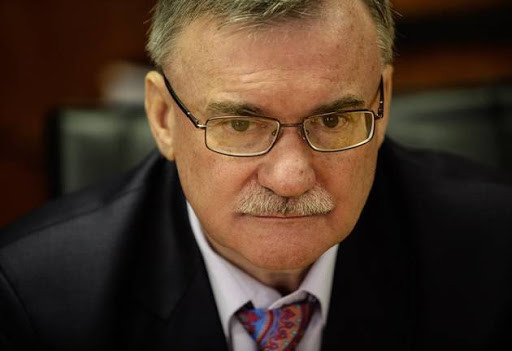
By Jared Green
Thirty-three percent of all electricity generation worldwide is from renewable sources. Over the past decade, $3 trillion has been invested in clean power worldwide. In 2018, about two-thirds of new energy capacity installed was renewable. If we are going to keep warming below 1.5 degrees Celsius (2.7 degrees Fahrenheit), the best-case scenario outlined at the Paris Climate Accord, global investment in renewable energy needs to double over the next decade.
The world will need thousands of new solar, wind, and geothermal power plants. In two-thirds of the world, solar and wind are already the cheapest energy option. To reduce coal and oil use, it’s absolutely critical that electricity from renewable sources remain that way. But given the pressures of population growth, climate change, urban sprawl, and resource extraction on our remaining ecosystems, it’s important to also limit the environmental and land-use impacts of the thousands of new facilities expected without delaying the transition to renewable energy.
Given all the constraints, smarter ways to design and build renewable energy projects are needed around the world. Benefits can be achieved by decentralising renewable energy infrastructure and making it local and equitable. Solar power plants can be built-in or near urban communities to ensure the power generated is accessible and affordable to renters and low-income households and also reduces environmental impacts. Utility-scale renewable power plants can also be planned and designed to reduce impacts on wildlife, and in some instances, even support ecological regeneration. Renewable energy can be designed to serve multiple functions and become real community assets.
A few innovative projects demonstrate how renewable energy could be made much more accessible. In Helsinki, Finland, the 275-kilowatt Suvilahti Solar Power Plant is built atop a power station owned by Helen, Helsinki’s power company. The project is marketed to energy consumers who can’t afford to put PV panels on their roof or who don’t have access because they rent. Through a website, consumers choose their own solar panels at a cost of $5 per month and subscribe in just a few minutes. On average, the energy for a one-bedroom apartment is met through subscribing to five panels, for a total of $25 per month; and their subscription is simply deducted from their energy bill.
For the Coyote Ridge Community Solar Farm in Fort Collins, Colorado, the non-profit energy developer GRID Alternatives partnered with the Poudre Valley Rural Electric Association (PVREA) to build a 1.95-megawatt community solar farm dedicated mostly to serving 140 low-income residents, who see a 30% reduction in their annual energy bills. To lower the cost of constructing the facility, GRID Alternatives brought in volunteers and job trainees, who also learn marketable skills in solar power installation.
Wind and solar can be fit into existing ecosystems and even support their regeneration. The 5-megawatt Block Island Wind Farm off the coast of Rhode Island is a model of how to site an offshore wind farm to minimise fatalities among endangered bird species, such as roseate terns and piping plovers, and other environmental impacts on ocean wildlife. The Rhode Island Coastal Resources Management Council (CRMC) assembled experts from academic institutions, including the University of Rhode Island, to undertake a two-year planning effort to map bird paths in an area covering approximately 1 500 square miles. The Ocean Special Area Management Plan, a sort of marine zoning plan for offshore wind, was applauded by president Barack Obama’s Ocean Policy Task Force. The 5-turbine facility demonstrates the value of a comprehensive ecological-planning approach with private and public stakeholders, which should be followed for the 30 additional offshore wind projects now planned along the eastern seaboard.
Across the US, beekeepers have partnered with solar power companies like Engie, Enel Green Power, and US Solar Corporation and energy advocates like Fresh Energy to transform sites of solar power facilities into sanctuaries for pollinators. A 2016 global analysis found that 40% of pollinator species may be at risk of extinction in the coming years. According to Rob Davis, with Fresh Energy, numerous states, led by Minnesota, have created an ecological statewide standard for vegetation that grows under and around large ground-mounted solar sites and laws, which enables solar power facilities to support increasingly fragile bumblebee, honeybee, and monarch butterfly populations, as well as those of other native bees.
- Chamisa under fire over US$120K donation
- Mavhunga puts DeMbare into Chibuku quarterfinals
- Pension funds bet on Cabora Bassa oilfields
- Councils defy govt fire tender directive
Keep Reading
Geothermal and hydropower plants can also support ecological regeneration. Landsvirkjun, Iceland’s national power company, hired Björk Guðmundsdóttir, a landscape architect, to create a new renewable energy design policy, one of the most progressive in the world. After a public backlash over the environmental impact of a hydropower project, Landsvirkjun redesigned its approach to renewable energy infrastructure projects. Geothermal and hydropower projects must now be designed in harmony with the landscape and provide community benefits. Geothermal and hydropower plants in planning stages throughout Iceland show how to marry infrastructure with landscape design, ecological restoration, and placemaking. One planned geothermal power plant even includes a hotel and greenhouse.
—Renewable Energy World











